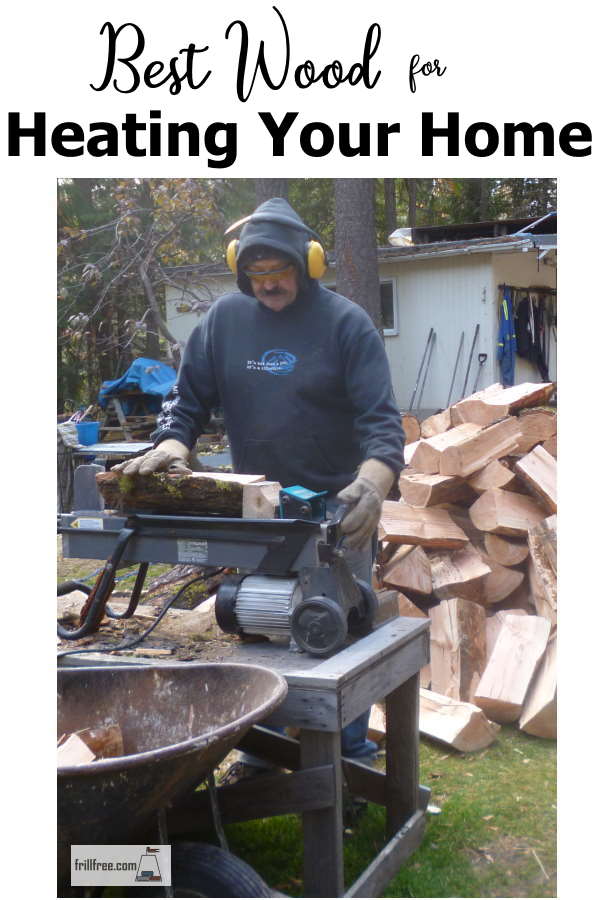Best Wood For Heating Your Home
Choose Your Favorite Firewood
There's nothing quite like the heat from a woodstove, it goes to your bones and heats you all the way through.
But
what's the best kind of wood to burn? There are a lot of different
ideas as to what constitutes the very best kind of wood; here are a few
guidelines and tips;
Any wood will burn, but you want BTU's and warmth.
The very fact that firewood is heavy, dirty and hard to process means you want the best bang for your buck, and all things being equal, you want something that is relatively easy to split, stack and move into your house to burn.
Conifers like fir, pine and larch are the go-to kinds of wood burned in my area, mostly because there is a lot of it. We're surrounded by forests that blanket the mountains with lots of these trees. If you're in an area like this, you'll be familiar with that type of wood.
In other areas, hardwoods like hickory, maple and poplar are popular, because they are all around.
Sometimes, willow is planted in rows and coppiced especially as biofuel, meant to heat your home. There is a whole industry built around pelletizing wood, which is then sold in bags to put in a hopper, and fed to your stove to provide heat.
No matter what kind of wood you burn for heating your home, it's got to be dry, and not only that, it's got to be seasoned. This is what it's called when it's been split and stacked under cover for at least a few months before burning it.
You also do not want 'punky' wood that's already showing signs of rot. This will plug up the chimney, creating a hazardous condition and possibly a chimney fire.
Around here, the summer is the best time to split wood for the winter, because then it's got from June or July until October, the beginning of our average wood burning season.
The wood stacked then is the best to burn;
and as an added bonus, because it burns hot, it won't plug up the
chimney with soot and creosote, the two most deadly things you'll ever
have to deal with. Creosote especially will start a chimney fire.
Learning how to identify the different species of wood you may come across is important. Here are the majority of the conifer woods I see in my area. Learn how to identify them from the bark, and other characteristics like blue stain in pine, the red rings in Douglas Fir, and the waxy texture of larch.
Other types of wood are good too, but less often used.
Willow burns hot and with a sweet smell, imparting that flavor to food cooked over it.
Poplar is a good wood for burning outdoors for gatherings as it doesn't spark. Burned in a woodstove it will make a lot of ash, not always a good characteristic, but it does burn hot.
Birch and maple, as well as fruit wood are good if they are in your area - they're all dense and burn for a long time, making them good options for overnight.
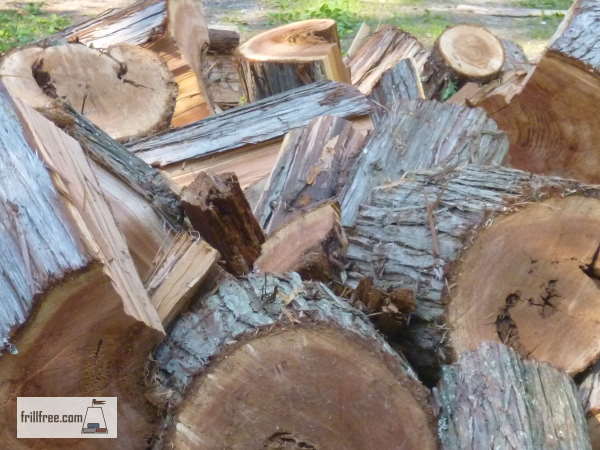 Cedar blocks for kindling
Cedar blocks for kindling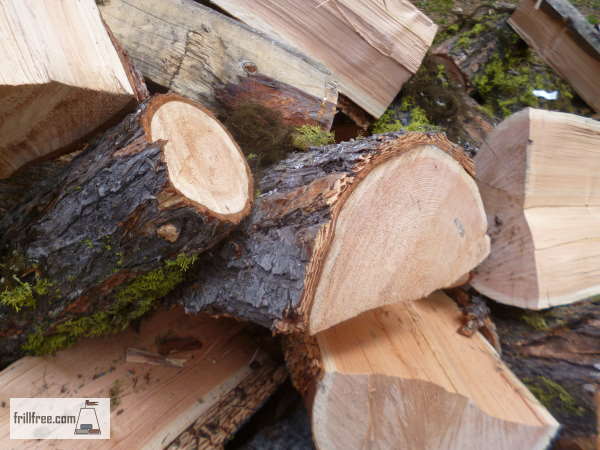 Douglas Fir with the bark still intact - it often falls off making a mess so try to season it well and knock the bark off before bringing it indoors.
Douglas Fir with the bark still intact - it often falls off making a mess so try to season it well and knock the bark off before bringing it indoors.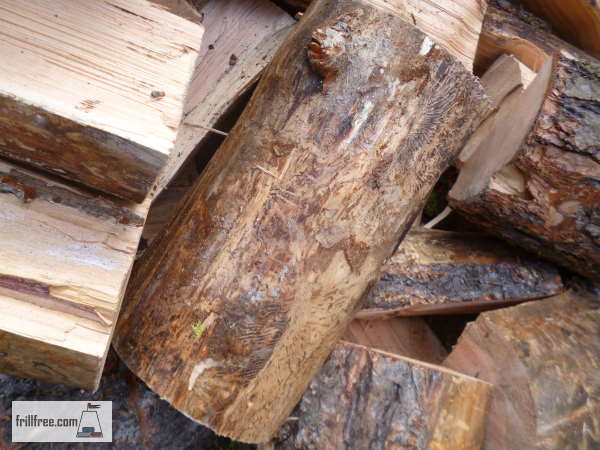 Douglas Fir without the bark - it often shows 'Indian writing' - the channels where bark beetles have burrowed
Douglas Fir without the bark - it often shows 'Indian writing' - the channels where bark beetles have burrowed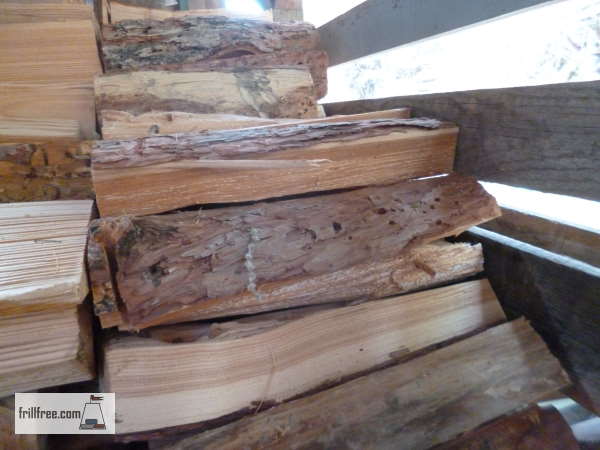 Larch firewood, split and stacked - it has a distinctive pink colored bark, and a waxy textured wood.
Larch firewood, split and stacked - it has a distinctive pink colored bark, and a waxy textured wood.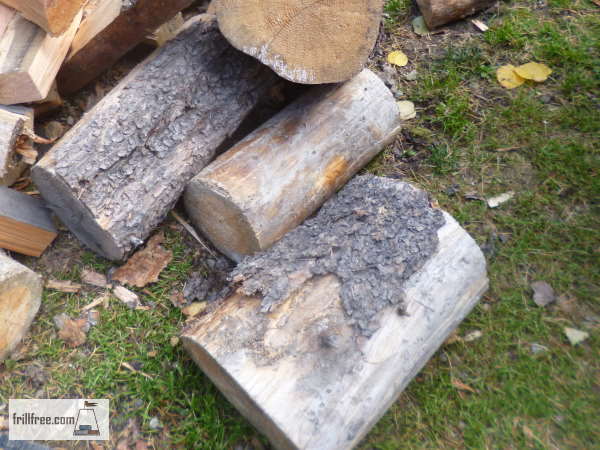 Pine blocks from beetle killed trees - best cut from 'standing dead' trees.
Pine blocks from beetle killed trees - best cut from 'standing dead' trees.Whatever kind of wood you harvest yourself, or buy from an ad on Facebook marketplace, you'll want to make sure you get every bit of value from it.
Stack it on top of pallets so it's off the ground, and make sure it's under cover, especially during those heavy rains in the fall. The weight of wet wood is almost twice that of dry, so you'll do yourself a favor if it's kept from the weather.
Wood that is seasoned will be lighter to move, and easier to stack higher than your head.
Other tips; leave some head room between the stacked wood and the cover, whether that's a metal roof, plastic sheets, or tarps. The condensation dripping from the roofing will act in the same way as rain, and also cause rotting to get started.
The bugs and spiders like the conditions under a closed in tarp or cover, so give it lots of ventilation and air movement.
